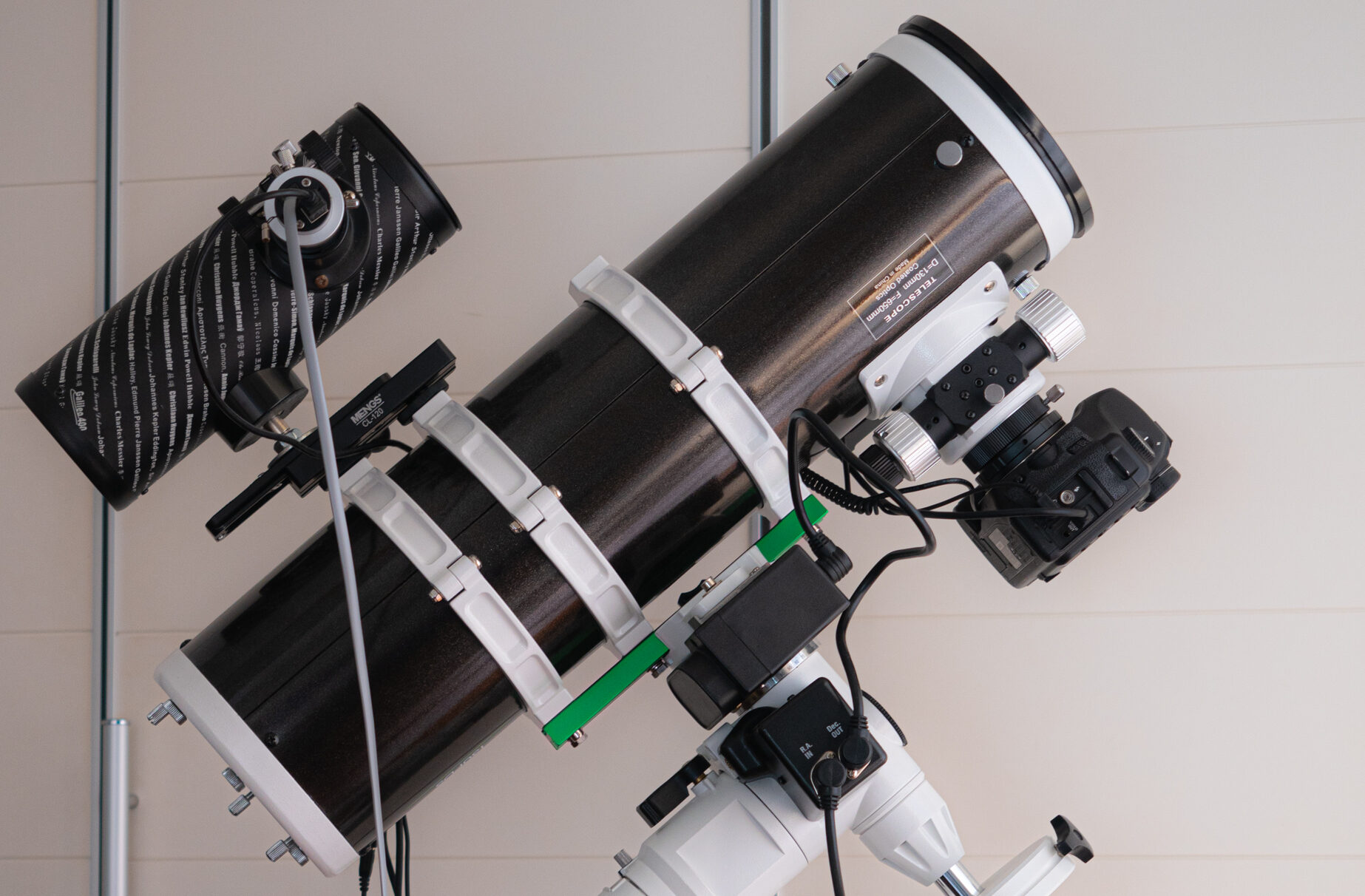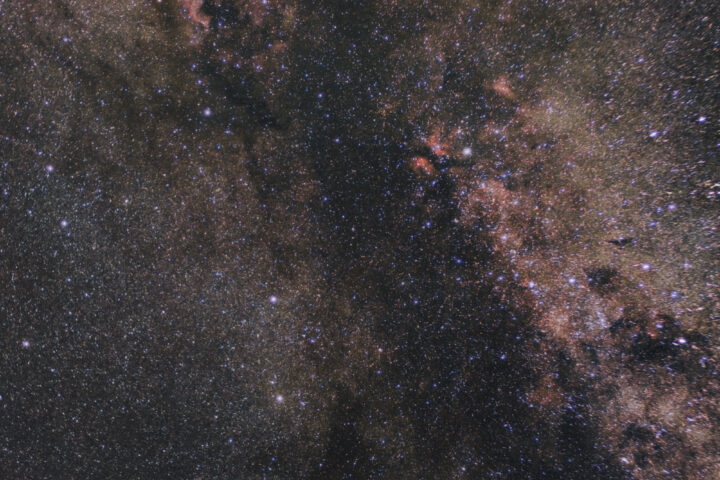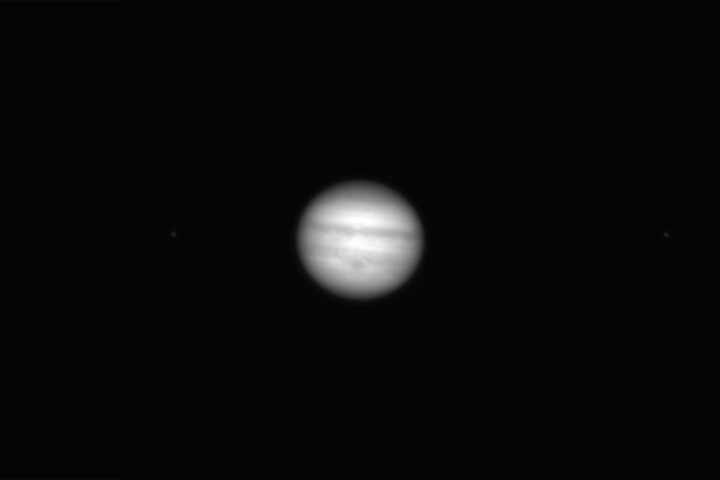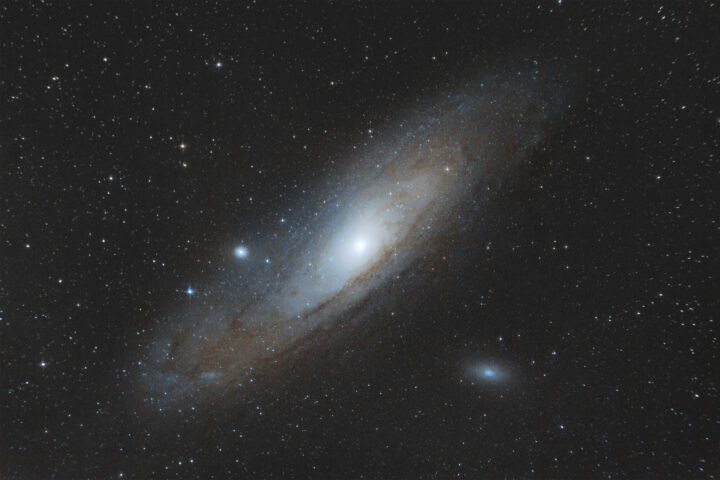Most of my astronomy photographs were taken using regular camera lenses, as my telescopes were not suited for deep-sky imaging. I’m glad to announce that the game has changed.
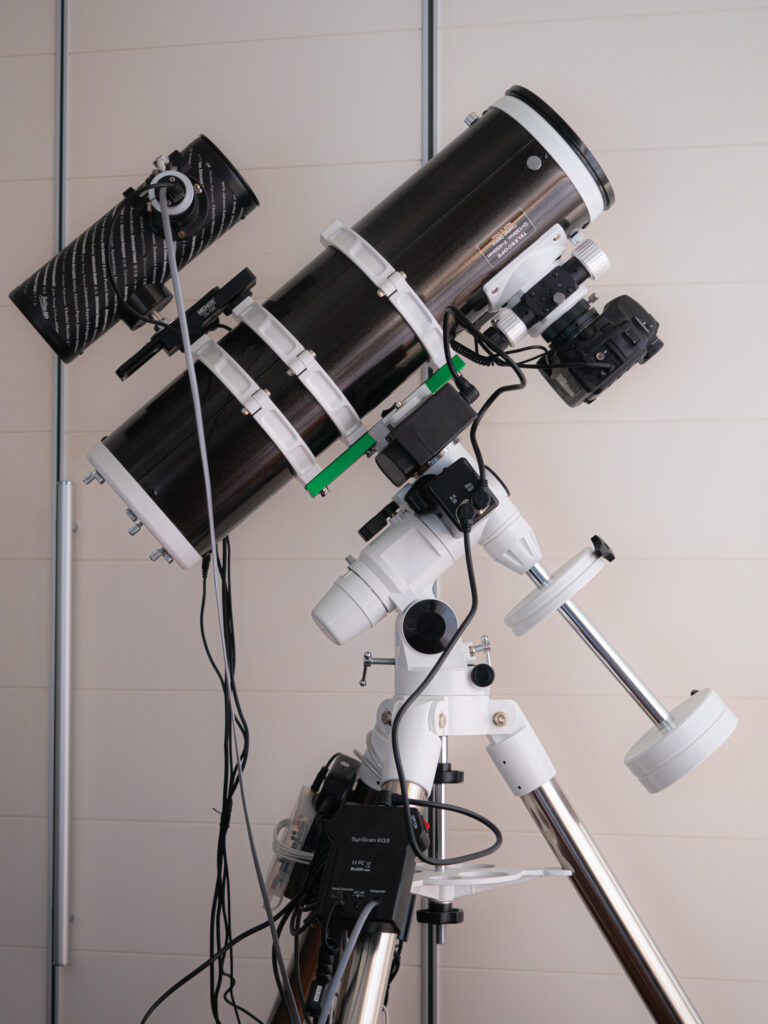
Parts List
IMAGING SCOPE: SkyWatcher 130PDS Newtonian Telescope
MOUNT: SkyWatcher EQ-3 Pro Synscan
GUIDING: QHY5L-II monochrome + Celestron Firstscope 76
SHUTTER RELEASE: custom-built shutter cable
IMAGING CAMERA: Canon EOS 5D (in the picture) or Olympus Pen-F
At the limits
The SkyWatcher 130PDS is a 5-inch f/5 Newtonian telescope and I think it was the perfect choice for my setup.
The Newtonian telescope design helped me maximize the aperture and light-gathering capability of my equipment while keeping the weight (and cost) low. At 4 kilograms, the 130PDS is the heaviest the EQ-3 mount can hold, as the guiding system and the imaging camera add considerable weight to the payload.
A versatile option
Speaking of cameras, another advantage of the 130PDS is the fact that it has a pretty large image circle. This lets me use three different camera configurations:
1) EOS 5D, whose full-frame sensor captures very wide field images;
2) PEN-F + 0.71x reducer (Viltrox EF-m4/3 speed booster), which captures images at a blazing fast f/3.5;
3) PEN-F, for close up shots at f/5.
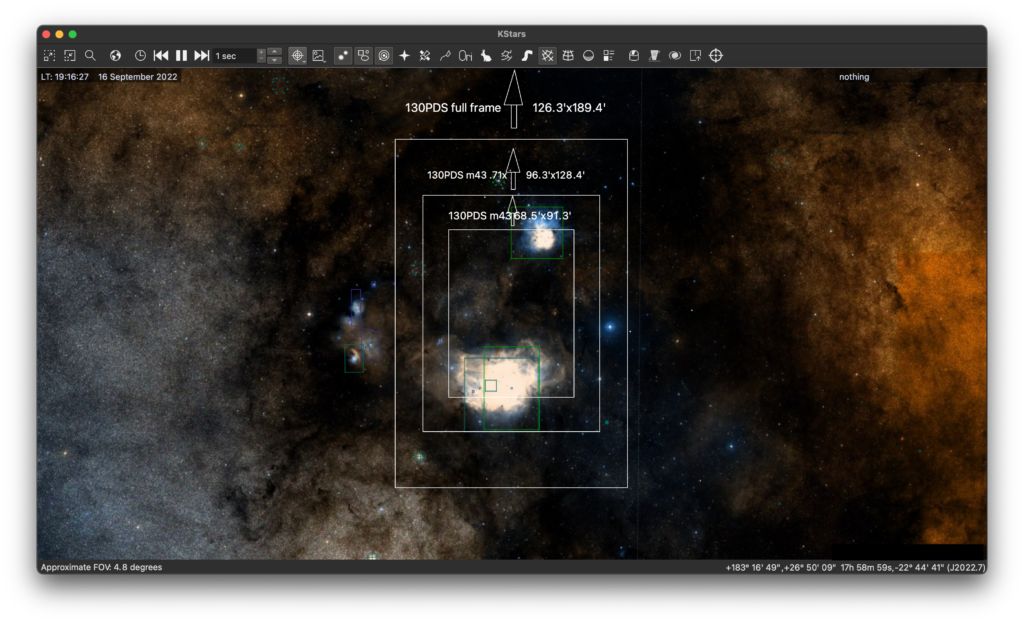
The telescope’s 5-inch aperture also makes it suitable for casual planetary imaging: I’m looking forward to capturing some images of Jupiter and Saturn with my QHY guide/planetary camera.
And, of course, I can still use it for visual observations.
Mount performance
I had made a little experiment to check wether the mount could handle the telescope before making the purchase, but I still wanted to double check.
I frankensteined a setup to mount a Barlow lens to my Pen-F, obtaining a focal length of 1100mm and a resolution of .62 arcsesc/pixel, and shot some long exposures. Minimal star trailing is present, but removing the Barlow will make it unnoticeable. The guiding data is also promising, especially when using multi-star guiding. Sometimes the total RMS error gets as low as 0.7 arcsecs!
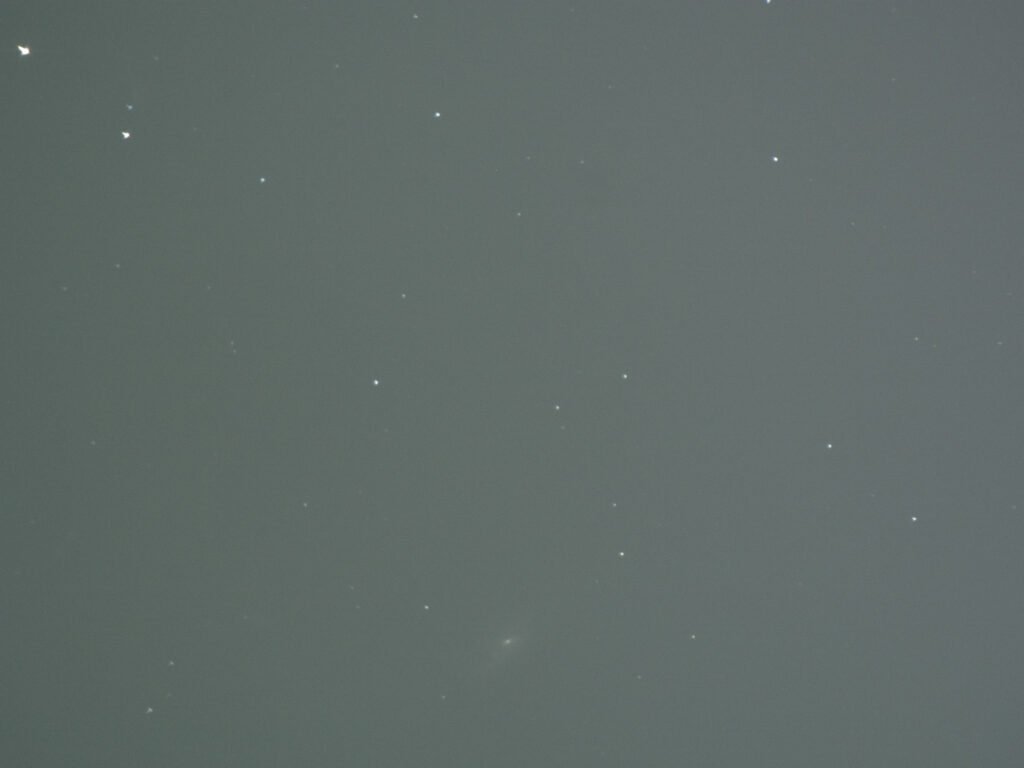
As you can see, the few stars that could stand out from the light pollution (try to spot M106 in the image) are very punctiform, despite the high magnification and the 180s exposure time. The weird shape of the stars at the edge is not caused by mount errors, but by the Barlow lens.
Conclusion
I’m really excited for the new telescope: it greatly increases the capabilities of my setup without compromising too much on the portability. I’ll keep you updated on my future projects involving the scope.
